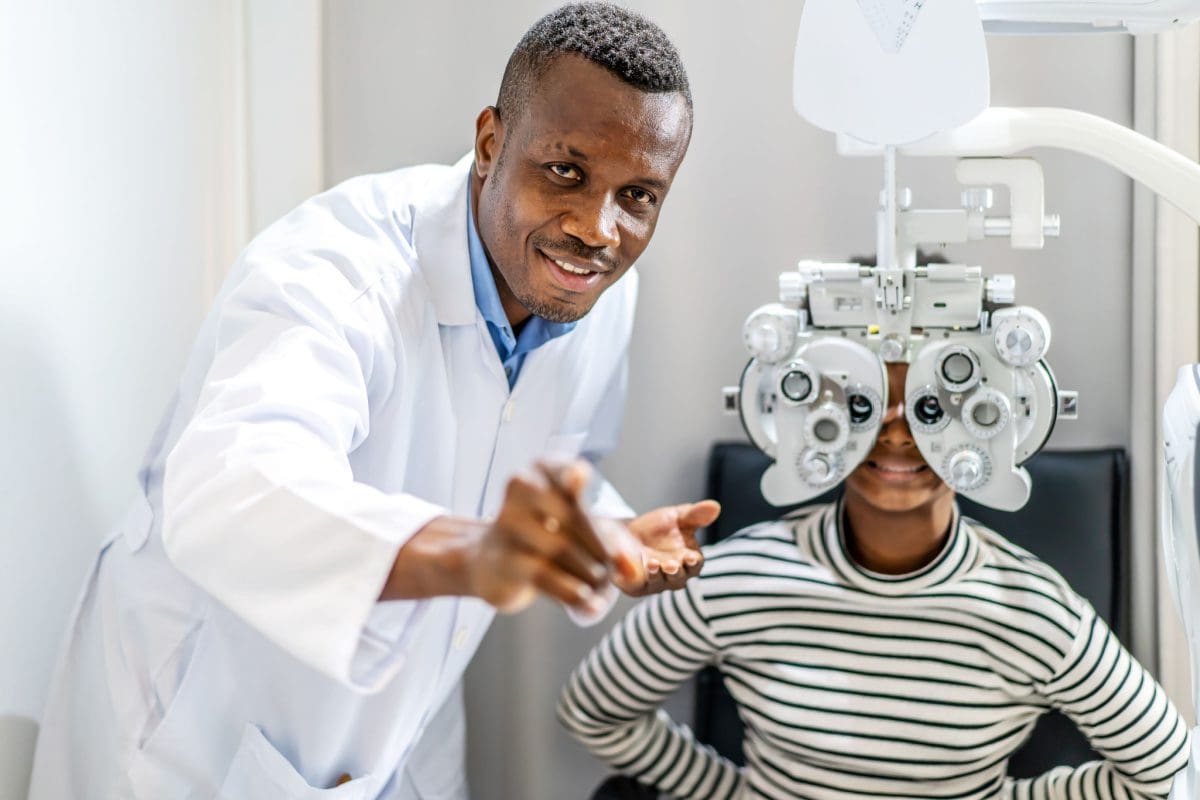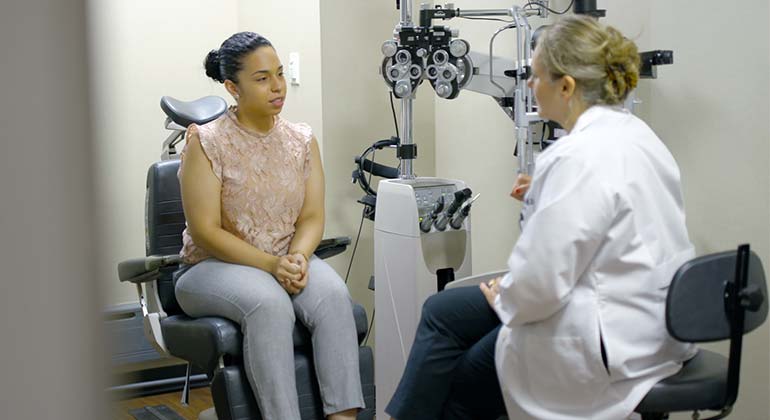Checking Out the State-of-the-Art Technologies Used for Dealing With and diagnosing Eye Problems
In the world of ophthalmology, the advancement of technology has actually substantially boosted the devices available for identifying and treating various eye conditions. From advanced imaging innovations that provide thorough insights into eye structures to robotic-assisted procedures that use unequaled accuracy, the landscape of eye treatment is continuously advancing. With the integration of man-made intelligence in diagnostics, genetics therapy advancements, and digital reality rehab, the opportunities for boosting client outcomes are increasing at a rapid rate. The merging of these advanced innovations holds the assurance of revolutionizing the area of ophthalmology, supplying new opportunities for personalized and reliable therapies.

Advanced Imaging Technologies
Advanced Imaging Technologies have reinvented the field of ophthalmology by offering in-depth and exact visualization of the eye structures. Optical Coherence Tomography (OCT) sticks out as a crucial technology in this realm. OCT makes use of light waves to record high-resolution cross-sectional images of the retina, enabling the identification of minute structural adjustments. This non-invasive technique aids in the early discovery and surveillance of numerous eye problems such as macular deterioration, diabetic person retinopathy, and glaucoma.
Additionally, Fundus Photography is an additional essential tool in sensory imaging. This method includes recording detailed photos of the back of the eye, including the retina and optic disc. Fundus Photography helps in documenting the progression of eye illness, examining therapy efficiency, and enlightening patients concerning their eye health.

Robotic-Assisted Surgical Procedures
Robotic-assisted surgeries have substantially progressed the capacities of ocular surgery, ushering in a new era of precision and efficiency in treating numerous eye conditions. By incorporating robotic innovation right into surgeries, eye doctors can attain unparalleled precision and control, leading to improved patient end results.
Among the key advantages of robotic-assisted surgical treatment in ophthalmology is the improved dexterity and stability it offers to surgeons. The robot arms can do exact motions with a high degree of precision, permitting for fragile procedures with minimal invasiveness. This degree of precision is particularly advantageous in surgeries entailing the retina, where also minor mistakes can have considerable ramifications for a patient's vision.
In addition, robotic-assisted medical systems offer real-time imaging and feedback to the doctor, enabling them to make informed choices during the treatment. This innovation enhances the doctor's situational understanding and allows for changes to be made immediately, ensuring optimum results for the person.
Artificial Knowledge in Diagnostics
With the evolution of innovative technologies boosting surgical accuracy in ophthalmic treatments, the combination of Expert system in diagnostics has arised as a critical growth transforming the area of eye care. Man-made Intelligence (AI) algorithms are being significantly utilized to assess complex information from imaging modern technologies like optical coherence tomography (OCT) and fundus digital photography to assist in the early discovery and exact diagnosis of different eye problems. These AI systems can efficiently determine patterns and abnormalities in images that might not be look at this website noticeable to the human eye, making it possible for quicker diagnosis and treatment preparation.
AI algorithms can likewise forecast condition development, advise personalized treatment plans, and assess the effectiveness of interventions. By improving the diagnostic process, AI not only improves the effectiveness of eye care experts however likewise improves client results by allowing timely interventions. As AI continues to advance, its role in diagnostics is anticipated to increase, supplying brand-new opportunities for early intervention and personalized treatment in the area of ophthalmology.
Genetics Treatment Developments
In the realm of ophthalmic advancements, current strides in genetics therapy developments have triggered substantial rate of interest among researchers and medical care experts alike. Gene therapy holds tremendous pledge in reinventing the treatment of numerous eye problems by targeting the underlying hereditary causes. By introducing hereditary material into cells to make Full Article up for unusual genes or to give a missing gene, genetics therapy supplies a tailored technique to dealing with acquired eye conditions such as retinitis pigmentosa, Leber congenital amaurosis, and others that were formerly considered untreatable.

As study in gene treatment remains to advancement, the capacity for customized therapies for a wider range of eye problems grows, offering new hope for people with genetic eye conditions.
Virtual Fact Rehab
Digital fact rehab has become an advanced strategy in enhancing the recuperation and rehab processes for individuals with different aesthetic impairments. retina service near me. By simulating real-world settings with immersive technology, online reality uses a distinct system for vision therapy and recovery. This innovative approach enables people to participate in interactive workouts and tasks developed to boost visual skill, deepness understanding, eye control, and overall visual performance
One key benefit of digital reality rehab is its capacity to customize therapy programs based upon the particular requirements and capacities of each client. With real-time responses and monitoring, health care specialists can track progress, adjust treatments, and give personalized care to enhance end results. Additionally, online truth modern technology can develop a controlled and risk-free room for people to practice visual tasks, conquer difficulties, and construct self-confidence in a virtual setting before transitioning to real-world scenarios.
Final Thought
In final thought, the innovations in imaging modern technologies, robotic-assisted surgeries, expert system diagnostics, genetics treatment technologies, and digital fact recovery have actually significantly improved the medical diagnosis and therapy of eye problems. retina service near me. These cutting edge technologies have revolutionized the area of ophthalmology, permitting for even more effective and accurate procedures. As technology proceeds to advance, the future of eye treatment looks appealing with the potential for much more cutting-edge remedies to enhance individual results
In the realm of ophthalmology, the advancement of modern technology has considerably enhanced the devices offered for diagnosing and dealing with numerous eye conditions. Fundus Photography aids redirected here in documenting the progression of eye conditions, examining treatment efficiency, and informing patients concerning their eye health and wellness.
Synthetic Knowledge (AI) algorithms are being increasingly made use of to evaluate complex information from imaging technologies like optical comprehensibility tomography (OCT) and fundus photography to aid in the early discovery and precise medical diagnosis of different eye problems.In final thought, the advancements in imaging modern technologies, robotic-assisted surgeries, fabricated intelligence diagnostics, genetics therapy advancements, and virtual truth rehabilitation have dramatically enhanced the medical diagnosis and treatment of eye problems. As modern technology continues to advance, the future of eye care looks appealing with the possibility for even more ingenious solutions to enhance person outcomes.